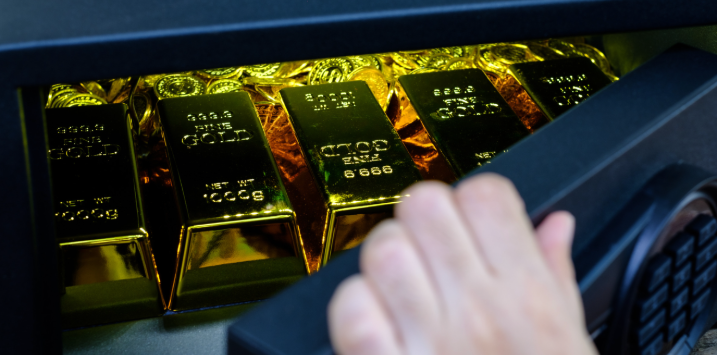
In gold they trust – China’s hedge against uncertainty
An article published by the Shanghai Metal Market on 7 June 2025, revealed that the People’s Bank of China (PBOC) increased its gold reserves for the seventh consecutive month, up 60,000 ounces month-on-month.
In a world marked by economic, technological, and geopolitical instability, China’s monetary strategy offers some insights. The People’s Bank of China (PBOC) and the State Administration of Foreign Exchange (SAFE) recently released data highlighting subtle but significant shifts in China’s gold and foreign exchange reserves as of May 2025. Perhaps above all else, the developments highlight China’s strategic approach to portfolio diversification and risk management.
Measured accumulation
China’s gold reserves grew for the seventh consecutive month, reaching 73.83 million ounces (approximately 2,296.37 metric tons) by the end of May 2025, up 60,000 ounces from April. The net purchase continues a steady trend of accumulation. The pace has notably slowed however – down from 70,000 ounces in April and 90,000 ounces in March. And while this deceleration suggests a recalibration, possibly reflecting a balance between bolstering reserves and navigating record prices, it’s important not to read too much into this. China continues to accumulate vast quantities of gold.
Gold’s role in China’s strategy is relatively clear: it serves as a hedge against uncertainty amid multidimensional global restructuring, and as the world undergoes a profound transformation across technology, militarisation, and wealth distribution. Gold, with its lower correlation to traditional asset classes, may be a compelling tool for reducing portfolio volatility while preserving value.
Many gold bugs believe the ongoing buying supports the long-term case for gold ownership.
China’s foreign exchange reserves also rose last month, reaching US$3.29 trilion, a modest US$3.6 billion increase from a month earlier.
Since 1997, China’s global share of gross domestic product (GDP) increased from 15.4 to 42.0 per cent, which translates into China holding the world’s largest reserves of foreign exchange, a multiple of Japan’s, which is the second largest. China has consistently run a large surplus in its current account, meaning it exports more than it imports. This leads to an inflow of foreign currency, which the PBOC then purchases by selling RMB (Chinese Yuan) to prevent the domestic currency from appreciating too quickly.
Foreign exchange reserves are assets, like cash, bank deposits, and bonds, held by the central bank in foreign currencies. They’re used to 1) Back liabilities: Ensure the PBOC can meet its financial obligations in foreign currencies, 2) influence monetary policy through what is known as ‘sterilisation’ – by intervening in the foreign exchange market, the PBOC can manage the value of its domestic currency, and 3) provide a buffer to protect the economy from external shocks and financial crises.
The growth in foreign currency reserves, like its gold accumulation, has slowed recently, reflecting global economic headwinds and the impact of tariffs. According to the PBOC and SAFE if they’re to be believed, the Chinese economy continues to rebound, with improving quality of growth, providing a strong foundation for maintaining robust foreign exchange reserves.
China’s actions arguably highlight two key strategies. The first is gold as a strategic asset: The PBOC’s consistent, albeit slowing, gold purchases reflect a long-term commitment to diversification and risk mitigation. Gold provides China with the ability to hedge against currency depreciation and geopolitical risks. The second strategy refers to currency and reserves, with the modest growth in foreign exchange reserves, coupled with China’s economic recovery, suggesting China’s confidence in its approach to global financial challenges.
While gold prices may face short-term volatility, as seen in the recent dip driven by U.S. payrolls, China’s continuing accumulation of gold bullion suggests the medium-term investment proposition remains intriguing, if not strong. Similarly, China’s steady rise in foreign exchange reserves strengthens the state’s capacity to influence financial markets without the necessity of administrative directives, while the size of its reserves has a symbolic function as a demonstration of China’s growing economic strength and the political legitimacy of the Communist Party.
One cannot help but consider whether there’s wisdom for investors in China’s approach – especially leveraging gold for diversification and stability in an unstable world.